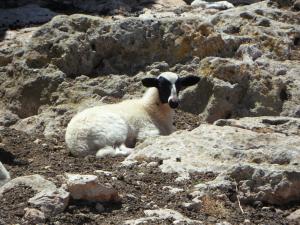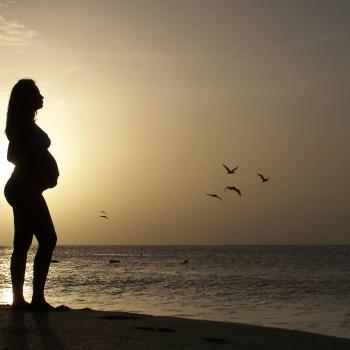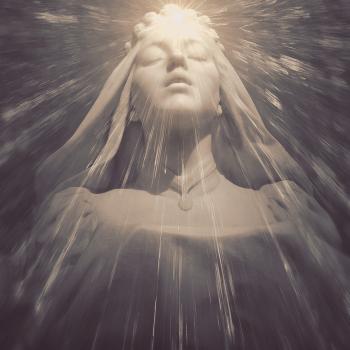 In reading a passage from Luke’s gospel (15:17) about ‘The Lost Sheep’, a few days ago, I was intrigued to see the very tiny but, in my opinion, very important difference between two translations. Here they are, firstly from the New International Version, “I tell you that in the same way there will be more rejoicing in heaven over one sinner who repents than over ninety-nine righteous persons who do not need to repent.” And then from the Good News Translation, “In the same way, I tell you, there will be more joy in heaven over one sinner who repents than over ninety-nine respectable people who do not need to repent.”
In reading a passage from Luke’s gospel (15:17) about ‘The Lost Sheep’, a few days ago, I was intrigued to see the very tiny but, in my opinion, very important difference between two translations. Here they are, firstly from the New International Version, “I tell you that in the same way there will be more rejoicing in heaven over one sinner who repents than over ninety-nine righteous persons who do not need to repent.” And then from the Good News Translation, “In the same way, I tell you, there will be more joy in heaven over one sinner who repents than over ninety-nine respectable people who do not need to repent.”
The backstory, as you well know, concerns a shepherd who has lost one of his 100 sheep. He leaves the 99 in the desert and goes in search of the stray. When he finds it, he places it on his shoulders and carries it home. Then comes the statement in Luke 15:17 quoted above.
There have been many interpretations of it over the last two millennia. I want to visit a few of them and then add two interpretations of my own.
The ‘original’ interpretation?
God is watchful and goes in search of those who stray from the kingdom. He is not angry or punitive but forgiving and loving and actually carries them home. He doesn’t drive them or threaten them, “if you don’t come home, I will…” but is delighted that He’s saved them from the predators.
The Church’s interpretation
- Best case scenario: the pastors of holy mother church are committed to returning the strays to the safety of being penned in and controlled through confession and penance and purgatory.
- Worst case scenario: they use threats, excommunication, inquisition, burning at the stake and hell as a means of keeping the flock in line – all in the name of a loving Jesus. By now – the Middle Ages – they are not so much interested in saving these sinners as in roasting them – here and hereafter.
Two interpretations of my own
- First:
The ‘stray’ is not a ‘sinner’ but a ‘seeker’, the one who is prepared to expand beyond orthodoxy and risk exploring the esoteric. That is the one who brings a smile to God’s face and joy to Her heart. It is the soul who is prepared to leave the safety of law for the pursuit of unconditional love; the one who is brave enough to leave the security of being controlled by the self-appointed guardians of orthodoxy in order to embrace Self-empowerment. At the other side of fear lies freedom.
The great archetype of this kind of soul is Mary Magdalene. Compared to the ‘Pharisee’ in all religions, she embodies the following distinctions:
– love vs law
– passion vs safety
– the courage to be different vs the shackles of respectability
– fire in the belly vs mediocrity in the mind
– freedom of Spirit vs obedience to dogma
Here, I see the complementary male and female archetypes of enlightenment: Christ consciousness (as typified by Jesus) and Christa (or Magdalen) consciousness (as typified by Mary.)
- Second
The ‘lost sheep’ is the soul with the courage to risk incarnation. The other souls prefer the safety of a pre-incarnate or dis-incarnate heaven. But then God is denied experiences that only incarnation can bring. They are the bees who refuse to leave the hive and so eventually starve in the absence of honey, pollen and nectar. And what does God do? She goes out – not in search of the lost soul but to search with the brave incarnate-er. And then He and carries it on His shoulders. In other words, God plays both parts and experiences fully the treasure hunt of incarnation through the brave soul.
In parallel universes God signs up to play the part of each soul who’s willing to risk incarnation. An old British proverb says, “He knows not England who only England knows.” You cannot appreciate home/heaven/Source unless you are willing to leave it and engage with the ultimate Hero’s Journey – incarnation
But no great story is devoid of fear, even existential angst, and so we plan the experience of our ‘daytime nightmares’ on a personal and even on a global level, in order to more fully appreciate love, forgiveness, patience… All of the virtues are simply what love looks like as it encounters different forms of fear.
God’s Role
So, what precisely is God’s role in this unfolding drama? Imagine you buy a two-way ticket for a journey that starts with us humans and travels back through the Big Bang into God’s mind; then the return leg starts with God and ends with enlightenment. Here’s what the journey might look like.
- Outward bound
We can trace our ‘ancestry’ from homo sapiens sapiens, to homo sapiens, to the hominids, to the first animals, to the original protozoa of the planet, to the Big Bang and ultimately to the Mind of God. There are bifurcation points all along this road. The take away, for me, is that life is a dream which the ego is having; the ego is a dream which soul is having; the soul is a dream which Spirit is having; and Spirit is a dream which Source is having. We live at the core of nested dreams and the journey involves disidentifying with less important levels of the dream in order to re-identify with more important levels.
- The Return journey
As we reverse that process, we move from Source to us. We realize then that all of creation is simply God in drag. She is playing all of the parts. In a sense, God is the first ‘zygote’ and the first division was that of transcendence/immanence. All subsequent articulations of duality are born of this trajectory; and all other phenomena are simply fractals of that initial Self-sundering.
In the story of evolution, as it throws up brand new forms that could not be predicted by its constituent elements (e.g., oxygen and hydrogen become water), science tells us that the total is greater than the sum of the parts. I believe that it is even more true that Source is greater than the sum of the totals.
This is the difference between pantheism (God is simply the sum total of all phenomena) and panentheism (God is both the sum total of all phenomena and a lot more besides.) Just as Shakespeare is much greater than his collected works.
Creation, then, is God’s imagination enfleshed.
[I will continue this essay in part two]












